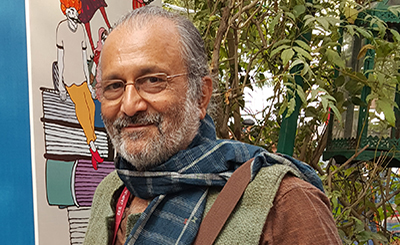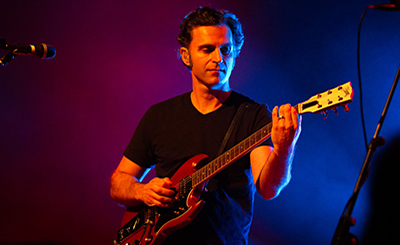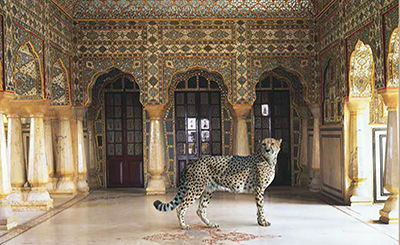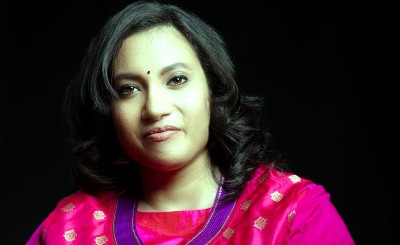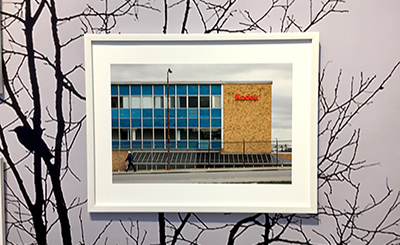Greater Than collaborated with five contemporary artists, who painted their own interpretations of Hogarth’s Gin Lane, to recreate a narrative that would popularise the spirit, at the premises of STIR at Chattarpur Farms, New Delhi.
The Goa-based Nao Spirits and Beverages — the alco-bev brand which houses the craft gin brand Greater Than London Dry Gin — and contemporary sipping gin, Hapusa Himalayan Dry, rewrites history in a creative way: By asking five contemporary artists to reimagine William Hogarth’s iconic work, which portrayed the evils of drinking gin in the England of 18th century
William Hogarth, the 18th century English artist, engraver and pictorial satirist, was also a poet of the plebeian who told powerful stories through his drawings of the ordinary and flawed people in everyday settings, capturing the orchestra of their chores with brutal candour and biting humour. A keen observer of human behaviour, Hogarth drew on the exuberant life of the London streets — bawdy houses, fairs, and theatres — which fed and fuelled his imagination. The subjects of his works are both the posturing rich and the flailing poor — men and women with squashed, pulled-about faces, straggly hair and precarious wigs, drinking or taking their medicines or singing, smoking, scheming and gambling. People, living and dying. They depict the poverty and moral squalor of the times he lived in.
.jpg)
Beer Street and Gin Lane — two prints designed to be viewed alongside each other — that Hogarth issued in 1751 came to be seen as his defence of The Gin Act 1751, which was enacted in order to forestall the tragic consequences of cheap unlicensed gin that flooded the streets of London in the 18th century. If you look at both prints closely, it’s a compare-and-contrast study between happy, healthy, prosperous and nourished-by-the-English-ale folks of the Beer Street with the sick and suffering, diseased and depraved men and women in Gin Lane, destroyed by their addiction to the foreign spirit of gin and sinking slowly in the quagmire of decay and death. One is the picture of placidity and poise, another of consummately composed chaos.
Hogarth, William Hazlitt wrote, was carried away by a passion for the ridiculous. He strove to show vice as “full-grown, with wings, pampered into all sorts of affectation, airy, ostentatious and extravagant.” His comically rich, reform-oriented and moralistic prints like ‘A Performance of The Indian Emperor’, ‘A Harlot’s Progress’ and ‘An Election Entertainment’ reveal his artistry, his strong theatrical sense, his keen eye for telling detail, and his adroit use of space, line and colour. The Beer Street’s fashionable fat woman, with her hoops wedged into the sedan chair, is contrasted with the crazy, loose-armed drunk of Gin Lane. Beer Street’s view is idealized, drawn with affection: beer-swilling, meat-eating men are shown alongside and saucy, easy women —a housemaid flagrantly swings her key. As our eyes move from the rosy and tranquil setting of the Beer Street to the disturbing view of the Gin Lane (housing toppling and baby falling), we are seized with shock. Given his penchant for drama, Hogarth may have intended to enhance our shock.
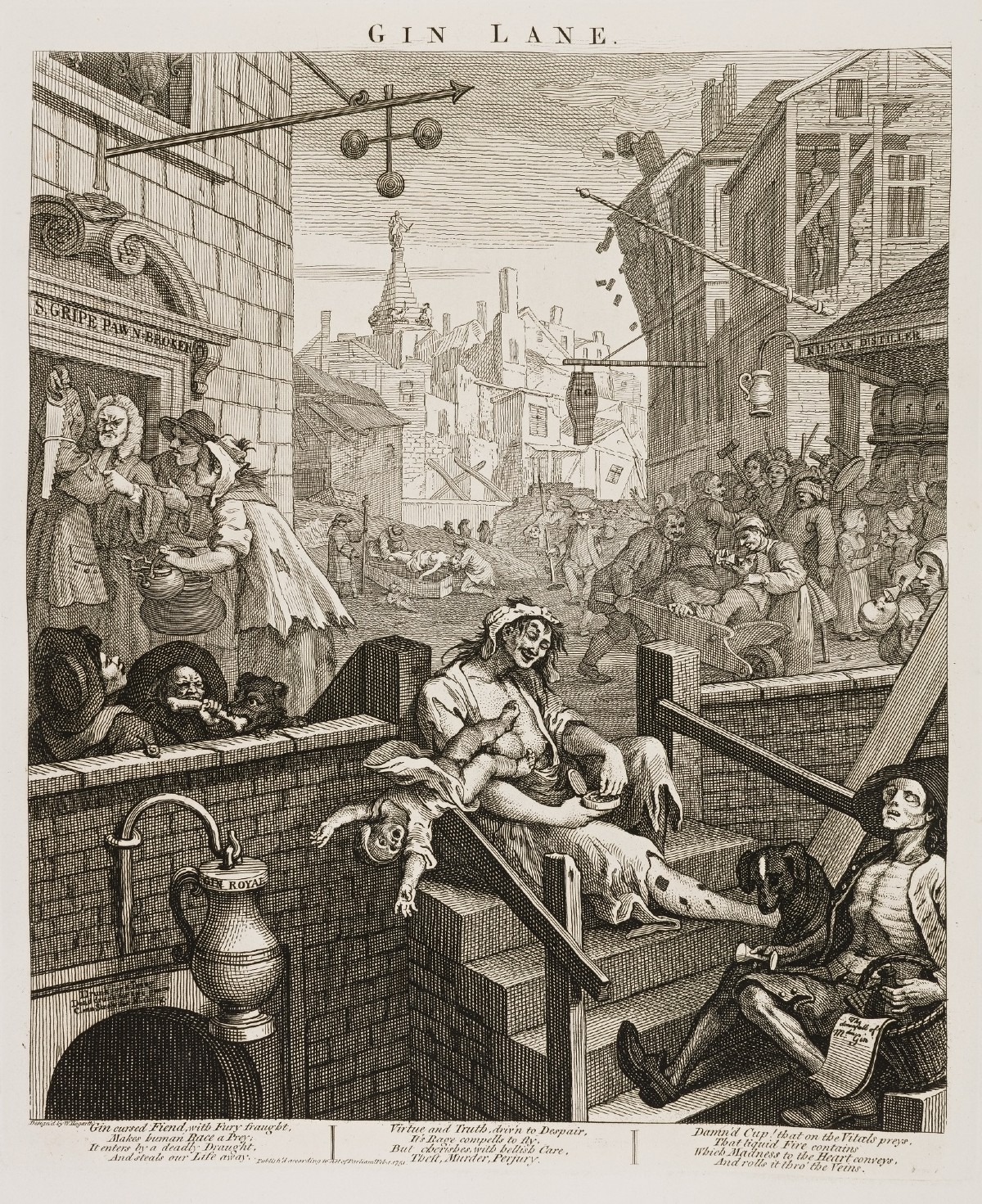
Beer Street and Gin Lane by William Hogarth (top); Gin Lane (above). Photos: Wikimedia Commons
Describing the deathly scene of ‘Gin Lane’, Thomas Clerk writes in The Works of William Hogarth (1812): “A straw-hatted woman throws back her head in an open-mouthed stupor, so numb and rock-like that a snail crawls without fear from the wall to her shoulder. A beggar shares a bone with a dog. Desperate for gin, ragged citizens hand over their clothes, the tools of their trade and even their pots and pans to the pawnbroker. Livelihoods are lost, and lives. In the background lie the heaped-up slums of St Giles, with the steeple of St George’s Bloomsbury behind (its spire topped by a monarch, not a cross). In the middle distance the parish beadle watches as the naked body of a woman is dropped into her coffin and her orphan child weeps on the ground….The pawnbroker’s sign and the barber’s pole pierce the centre of the print like spears, their straight lines offsetting the curving gin signs. The angle of the undertaker’s board, a coffin on a gibbet-like pole, is echoed by the sight of the hanging man, dangling in the ruins of his house. Beneath this sign a fearful emblematic figure dances a jig, a wild cook, like Satan, with the bellows for his fire balanced on his head and a baby impaled on his spit. Allegory and hyperrealism mix… In front of his numbered barrels cripples fight with begging stools and crutches, charity girls raise their glasses, and a mother tips gin into her baby’s open mouth.”
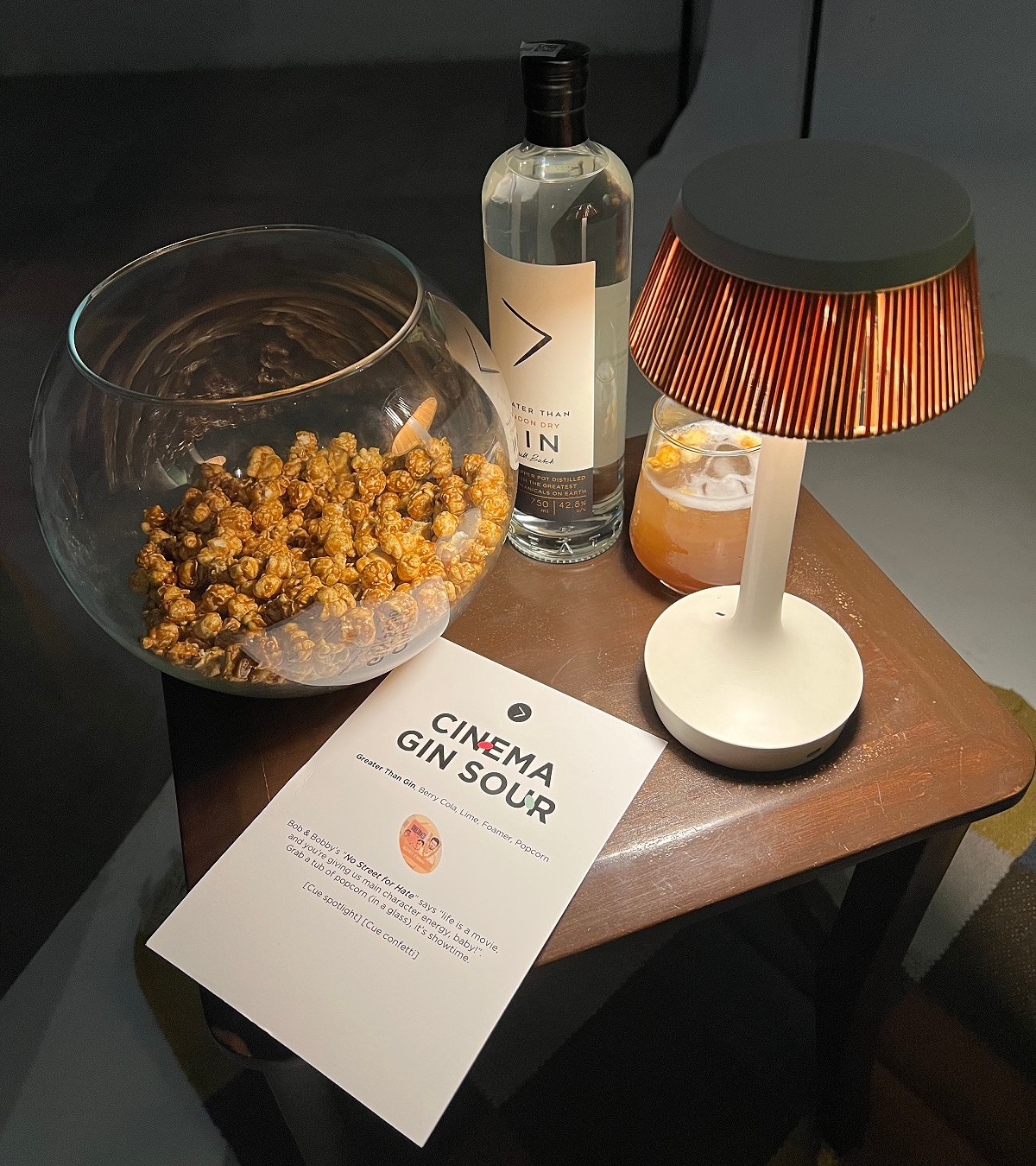
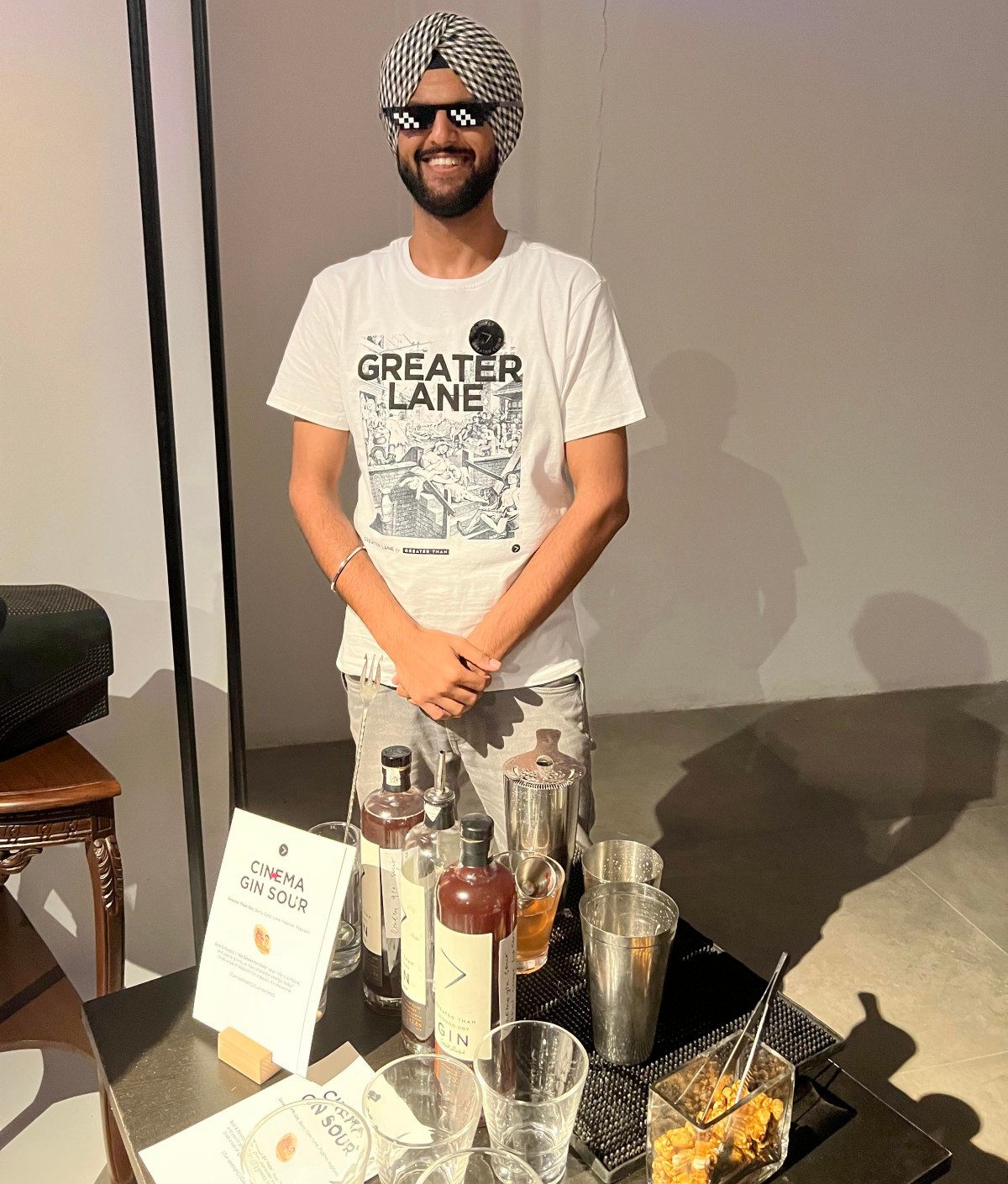
Cinema Gin Sour was served next to Bob & Bobby’s artwork No Street For Hate. Photos: Shireen Quadri
This was the backdrop, then, of Beer Street and Gin Lane, which contrasted the benefits of beer with the evils of drinking gin — the latter was squarely blamed for engendering immorality at a time when the craze for gin had swept the lower classes in England. But all this was in 1751. The reality of gin since Hogarth’s cruel takedown has changed drastically. About 270 years later, gin is not only perceived differently, it’s become a popular poison for many. The consumption of gin worldwide has increased substantially in recent years: The global gin market was valued at $14.03 billion in 2020, and is projected to reach $20.17 billion by 2028. Talking specifically of India, the number of distillers and ginthusiasts has seen a phenomenal growth. If you are a gin aficionado, you’re spoilt for a choice as both Indian and foreign brands such as Greater Than, Tanqueray and Stranger & Sons are vying to penetrate the market. Beefeater French firm owner Pernod Ricard, the world’s second-largest wine and spirits seller, recently announced its plans to launch its premium Malfy and Japanese Ki No Bi gin brands in India. While it has expanded its distribution of Roku gin, Beam Suntory is set to bring its premium Sipsmith London gin to the Indian terrain. Tanqueray and Gordon’s is exploring the possibility of bringing two of its flavoured variants to India.
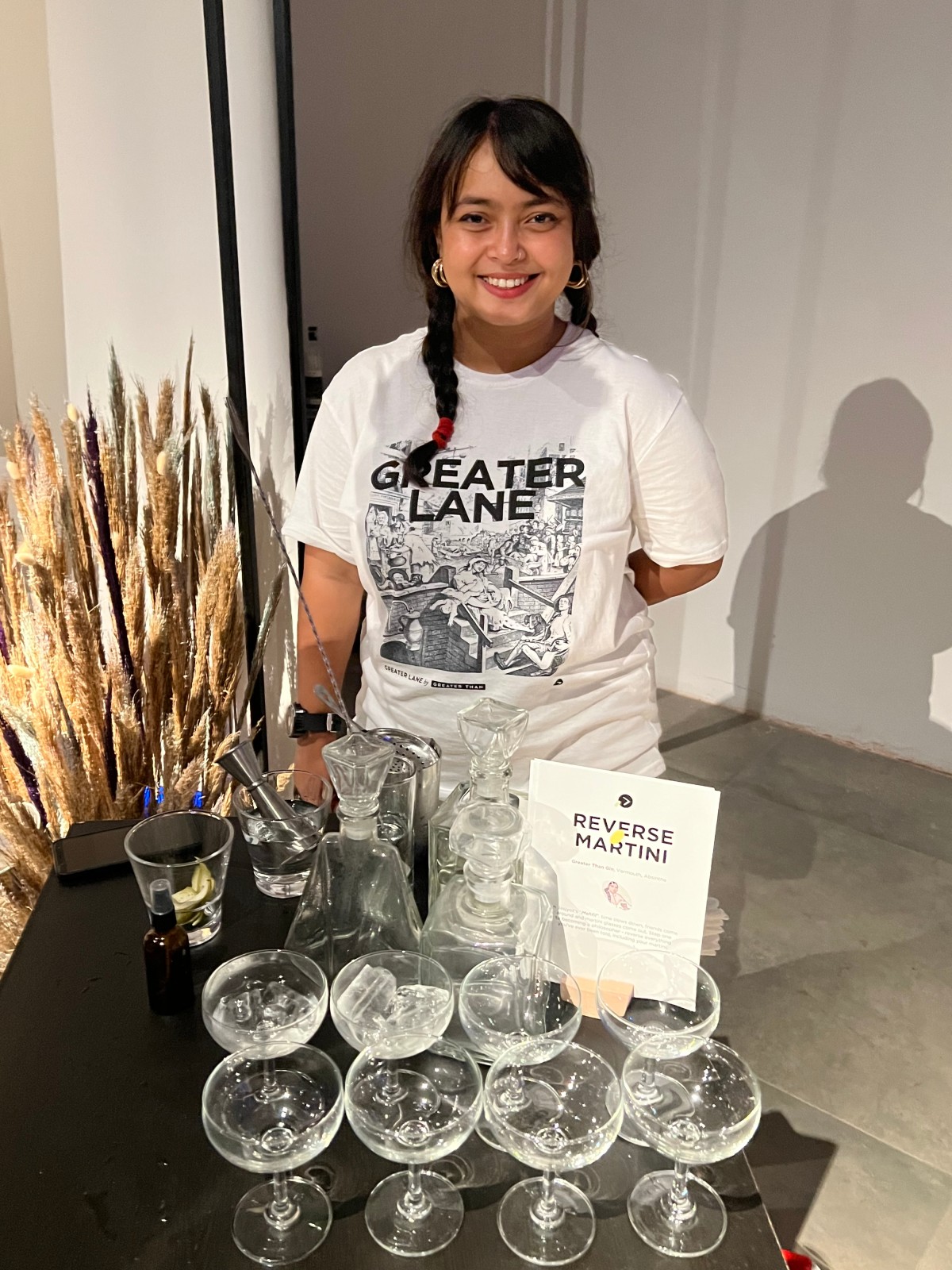
Reverse martini was served next to Jasjyot Singh Hans’ Mehfil. Photo: Shireen Quadri
The journey of Greater Than (>), India’s first craft gin which is produced locally in Goa, has been particularly interesting. It makes the most heady and electrifying gin cocktails. A London dry gin made in India (which boasts of as India's first and only craft gin), it’s a delish blend of nine different botanicals that give it a citrusy edge: juniper, coriander seeds, lemongrass, fennel, Angelica and orris roots, ginger, chamomile and orange peels. Greater Than Gin recently hosted an event at STIR (founded by Amit Gupta) at DLF Chattarpur Farms in New Delhi to change a “glitch in history” represented by Hogarth’s 1751 artwork titled Gin Lane. Greater Than asked five contemporary artists to reimagine Hogarth’s iconic work in contemporary contexts at the curated exhibition, which was a thrilling, high-octane, multi-sensory amalgamation of immersive performances, gastronomical voyages, trippy dance and groovy music.
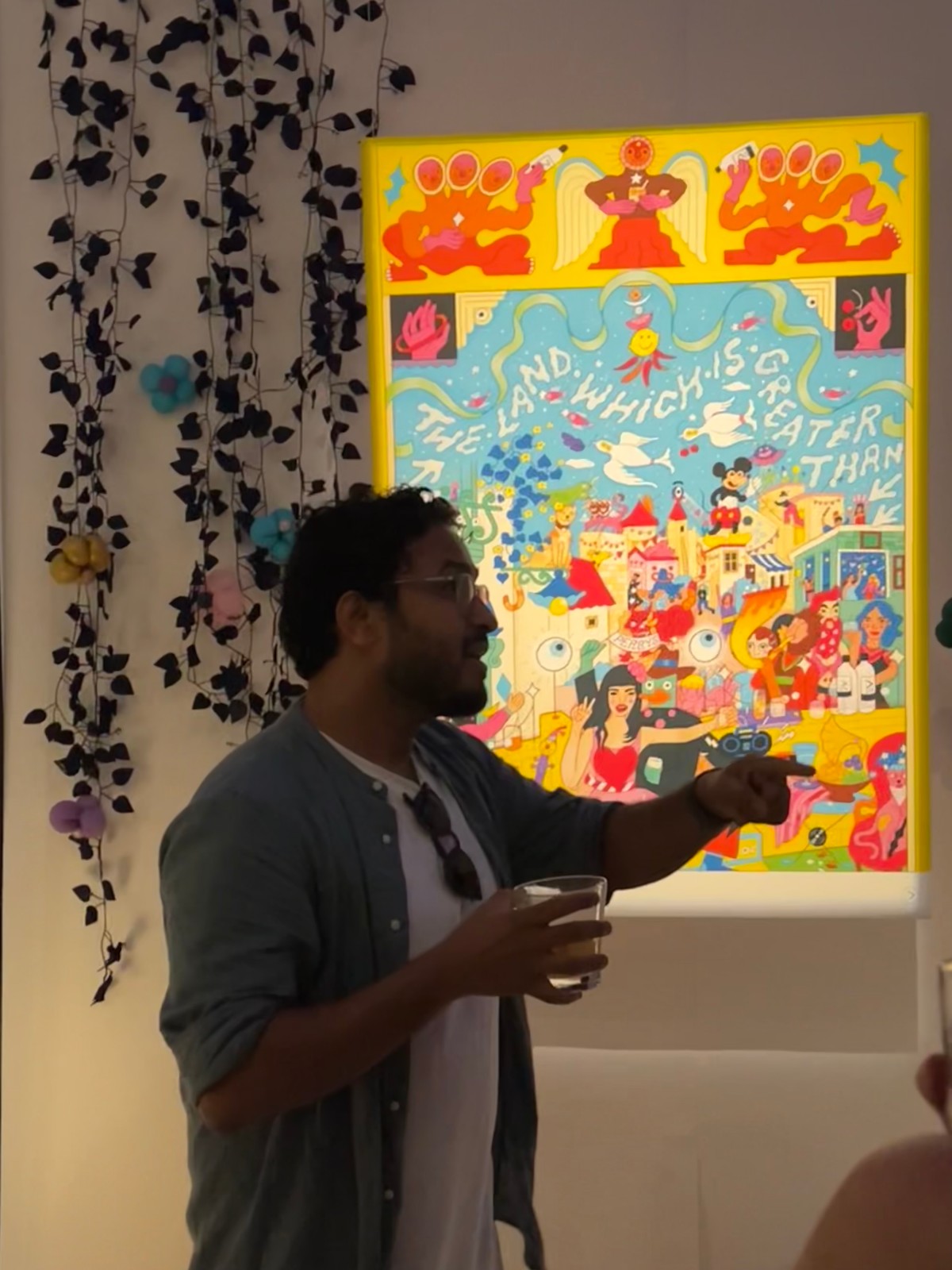
Standup Comedian and YouTuber Abhish Mathew, who is also the brand ambassador of Goa-based Nao Spirits and Beverages, the alco-bev brand which houses the craft gin brand Greater Than London Dry Gin, curated the art trail. Photo: Shireen Quadri
The event, ingeniously titled “Greater Lane by Greater Than”, was organised by Goa-based Nao Spirits and Beverages, the alco-bev brand which houses the craft gin brand Greater Than London Dry Gin, and contemporary sipping gin, Hapusa Himalayan Dry. It sought to rewrite history in the most creative way. The Greater Than team collaborated with five contemporary artists: Priyesh Trivedi, Priya Kuriyan, Shweta Sharma, Jasjyot Singh Hans, Saswata and Susruta Mukherjee (Bob & Bobby), who painted their own interpretations of Hogarth’s Gin Lane, to recreate a narrative that would popularise the spirit. Each art was paired with a Greater Than cocktail that was served next to its display.
Standup Comedian and YouTuber Abhish Mathew, who is also the brand ambassador of the company, curated the art trail which was beautifully organised and displayed at one of the halls at STIR in Chattarpur Farms. The trippy and groovy music belted out by Ron E & Bassic Boy, and Parimal Shais & Friends.
Nao Spirts & Beverages was founded by Anand Viramani and his wife Aparajita Ninan in 2016. Greater Than and Hapusa are available in eight Indian cities, including Goa, Mumbai, Pune, Delhi, Bengaluru, Hyderabad, Kolkata and Nagpur. It is also exported to 14 countries. Talking about the initiative, Aparajita Ninan, co-Founder and Creative Head for Nao Spirits, said: “We are a young brand with big plans of leading the way for gin into the future in India and around the world. We always say, Greater Than is the ‘people's gin’ — an equaliser that brings together all ages, genders, cultures, and communities, and so we did.”
Here are more details, provided by Nao Spirts & Beverages, about the artists who redefined gin by re-addressing the most iconic work in the history of the spirit, and a few lines about their works.
Priya Kuriyan: Known for her soft yet bold lines, and colorful nostalgic caricatures, Priya is a children’s book writer-illustrator, comics maker and chronic doodler. She has directed educational films for the Sesame street show (India) and the Children’s Film Society of India (CFSI), and has illustrated numerous children’s books for various Indian publishers. Her magical work, Ginolem, is a Hamlet not a Gimlet. Hogarth’s Gin Lane is reconceived within a lush and bountiful landscape that invites one to enter into a journey filled with revelry, chance encounters, intimate conversations and innumerable possibilities; all the things we have missed so dearly in the last two years and a half. Gin Lane here is imagined as a place of leisure and giddy pleasure and of all the gin joints in all the towns in all the world.
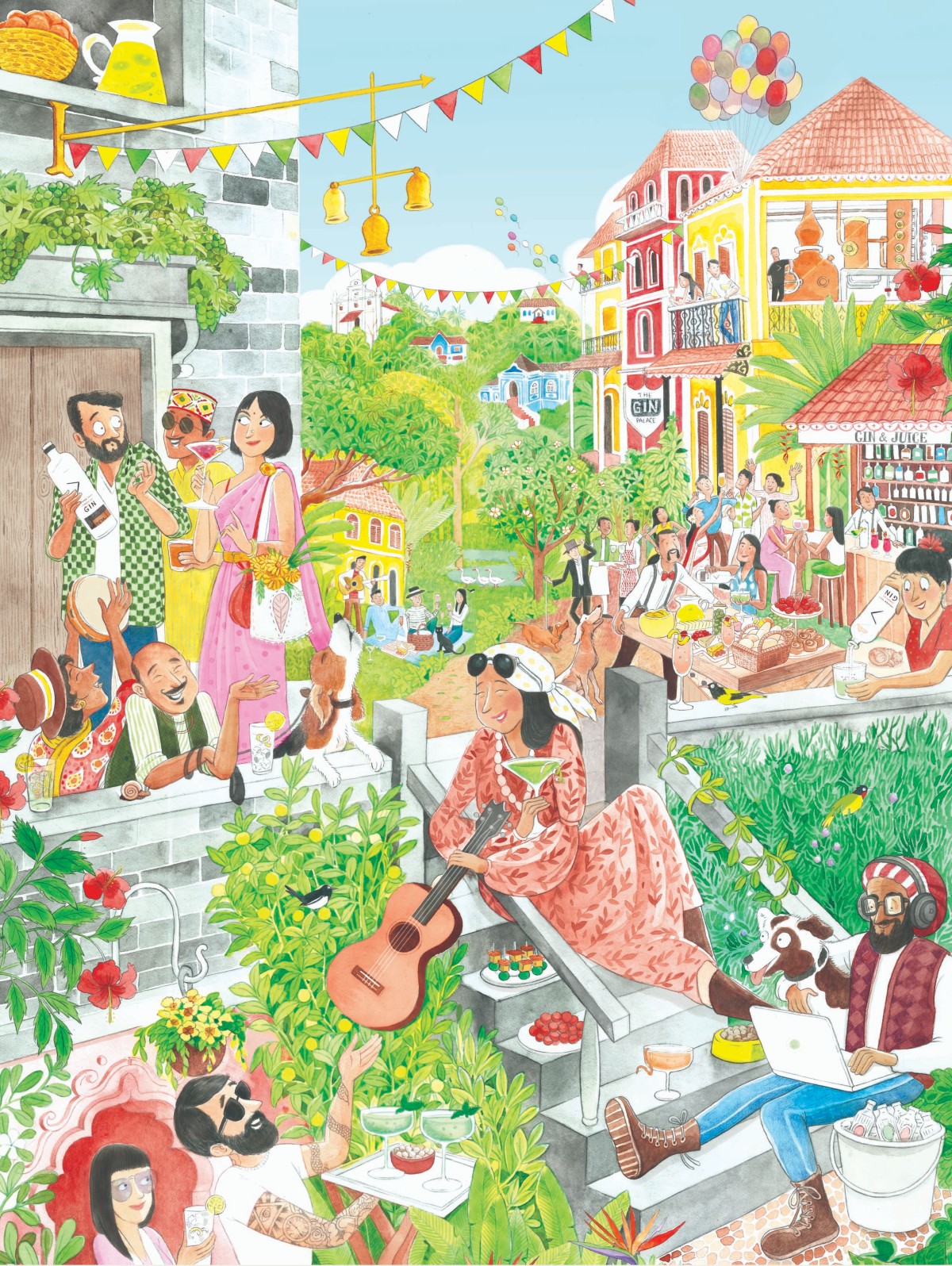
Priya Kuriyan (above) and her artwork, Ginolem
Priyesh Trivedi: A self-trained visual artist, Priyesh’s practice revolves around nostalgia and subversion with ironical commentaries on popular culture and archival imagery. He's also the creator of ‘Adarsh Balak’, a series of illustrations and comics, parodying and critiquing the educational posters that were prevalent in Indian schools in the 1980s and 1990s. His work, The Alley, is an imagined space between Hogarth’s Beer Street and Gin Lane. It’s idyllic and free of the prejudices that the original illustrations carried with them. The subjects are all in their skeletal forms to blur the class and socio-economic divide that separated beer and gin drinkers according to Hogarth. Here, they all co-exist and indulge without any stereotypes. On a deeper level, The Alley is at the edge of the street and the corner of the lane where everyone is past their mortality no matter what you drink.
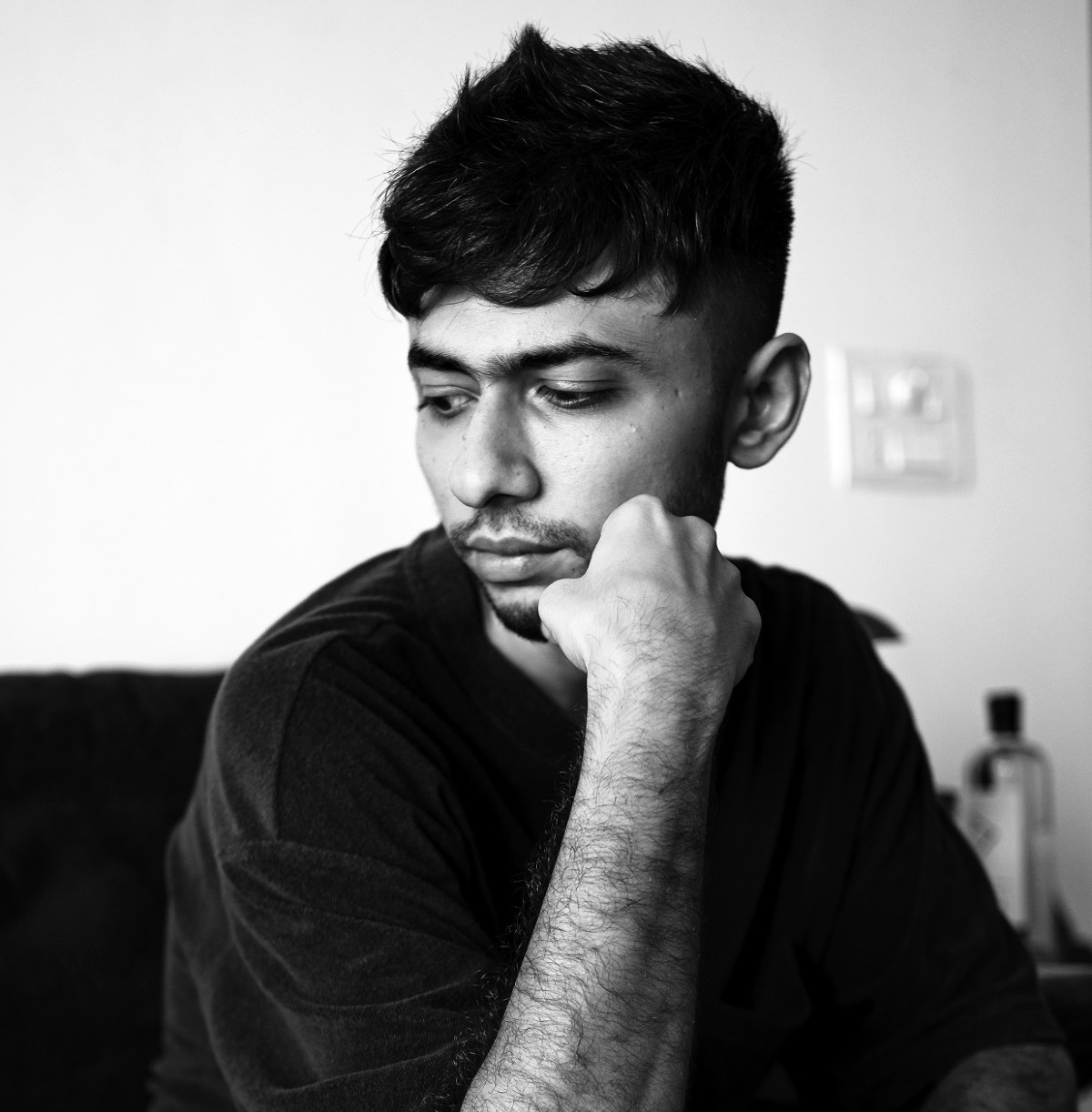
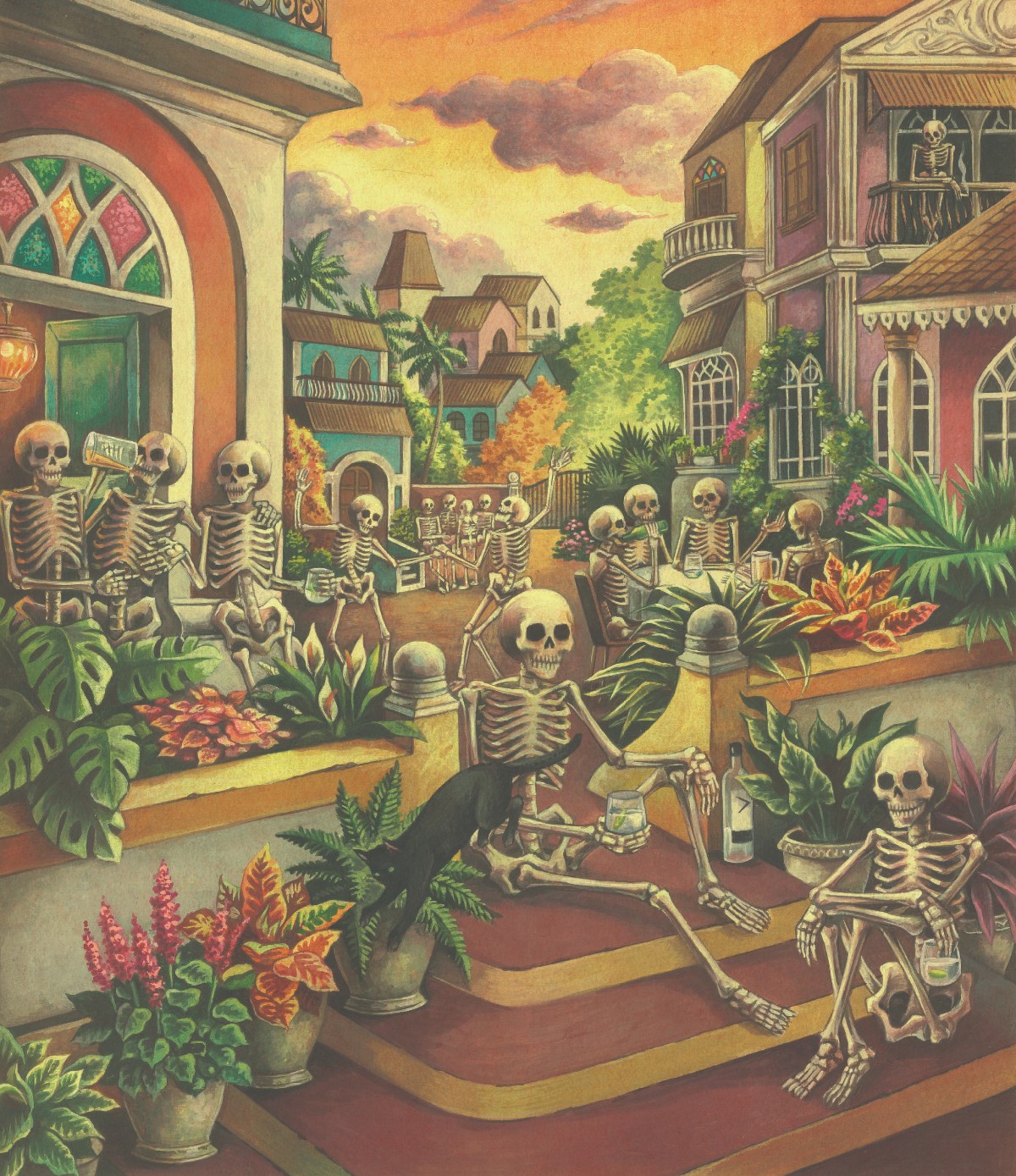
Priyesh Trivedi (above) and his artwork, The Alley
Jasjyot Singh Hans: An illustrator unendingly inspired by an explosive neon mix of fashion, music and pop culture. He has constant regard for things past and a voracity for all that is current. His work chronicles themes of body image, sexuality, and self-love. His work, Mehfil, is a subversion of Hogarth’s Gin Lane, where chaos is replaced by calm and the rigid structures are replaced by a clear, surreal, crystal landscape. In an intimate gathering of friends, time slows down, cocktails clink and laughter echoes.
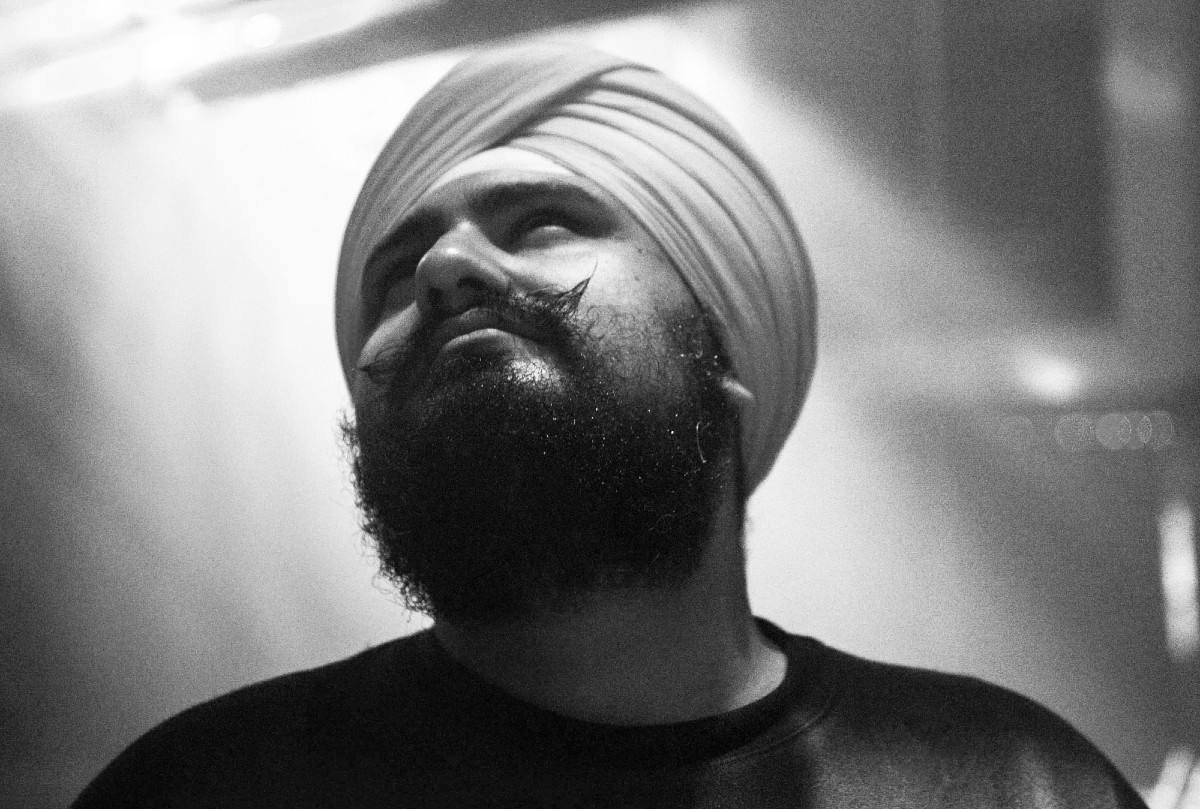
.jpg)
Jasjyot Singh Hans (above) and his artwork, Mehfil. Artist photo: Adam David Bencomo
Bob (Susruta Mukherjee) and Bobby (Saswata Mukherjee): Known for their biting political sketches, Susruta Mukherjee (Bob) and Saswata Mukherjee (Bobby), twin brothers, are two artists from Kolkata who sketch everything they see (and everything they don’t). They are passionate about making films and are addicted to reading and making comics, and are currently writing their feature film script. Their work, No Street For Hate, illustrated a happy day for those who chose love over hate, equality over discrimination, and stood by their choices when it was the toughest to do so. A day when many are on the street to celebrate a new beginning, where they are again free to choose who to love, what to eat and how to live, all, with their favourite drink.
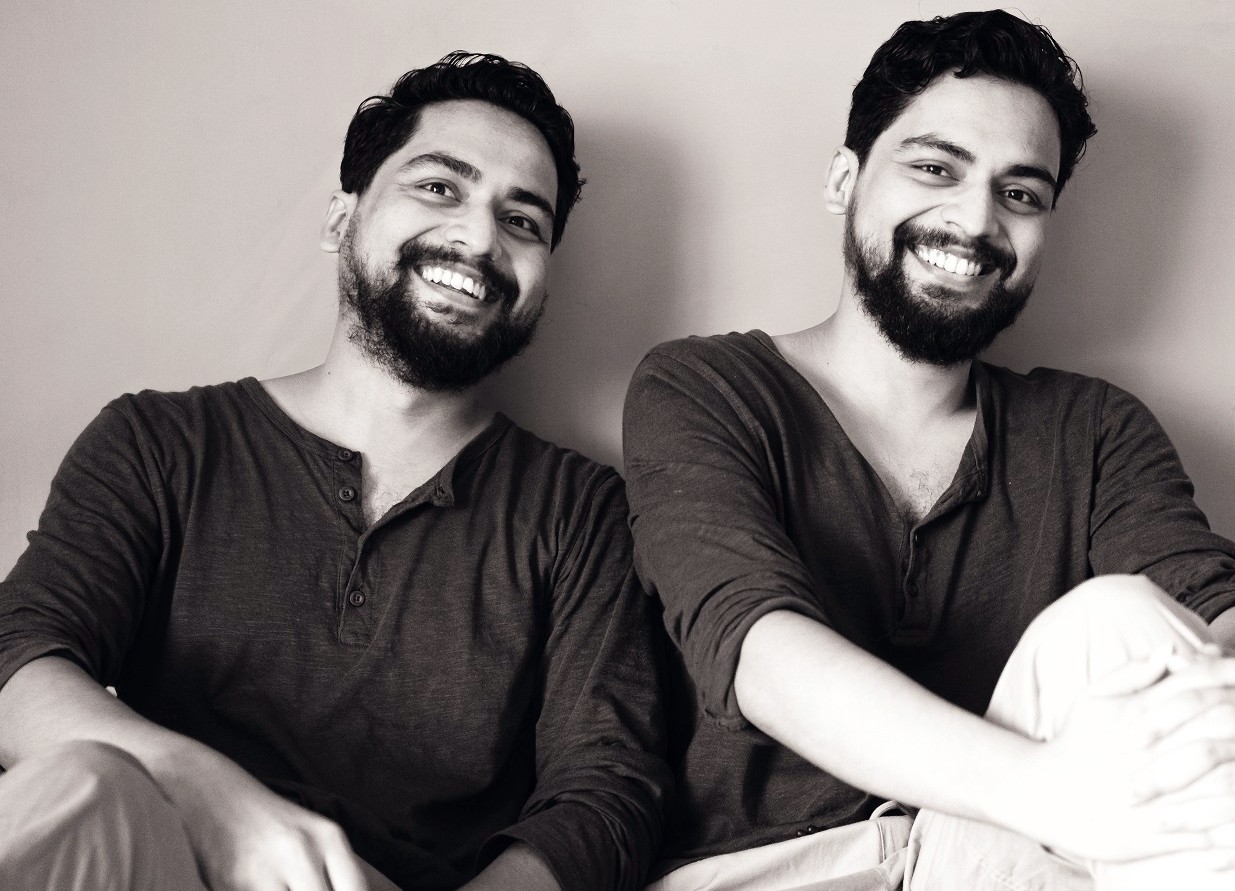
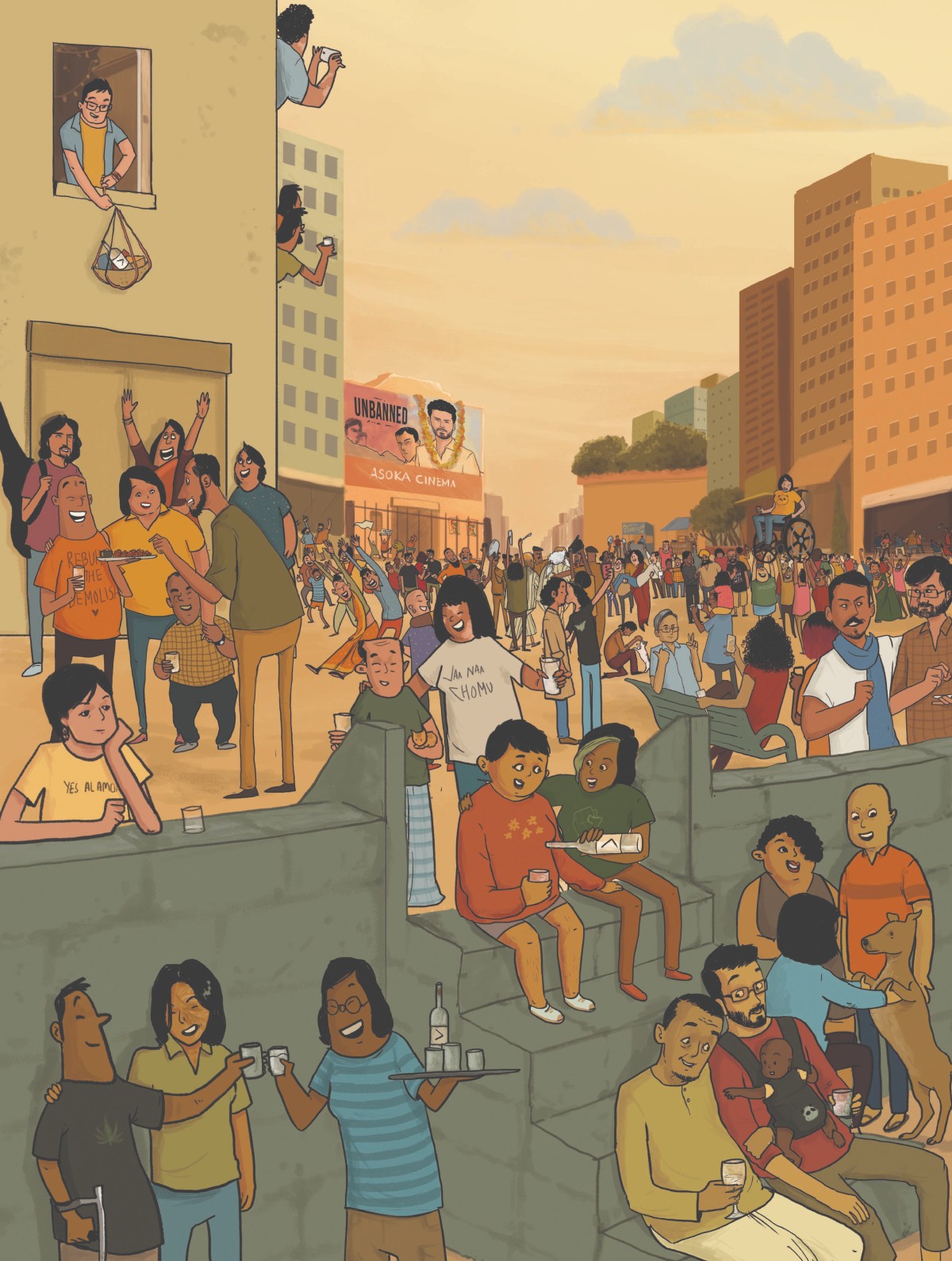
Bob (Susruta Mukherjee) and Bobby (Saswata Mukherjee), above, and their artwork, No Street For Hate
Shweta Sharma: An emotive surrealist who has a natural OCD for visual order and arrangement. Her illustrations focus a lot on contradicting emotions, but in contexts that are beyond generic art and cultural dynamics. Her work, A Land Which Is Greater Than, shows how under the variant of ‘colours in different skins’:
All creatures alike
Sense of space
A Verlaine victory
Ranges of oddly evens
An Oscar flight
Under the sky with thousands
of bricks of dewy sunlight, driven;
Charmed energies chattering
giving a toast to this united,
blessed coincidence
Joy is happy it stayed longer
In the land which is Greater Than.
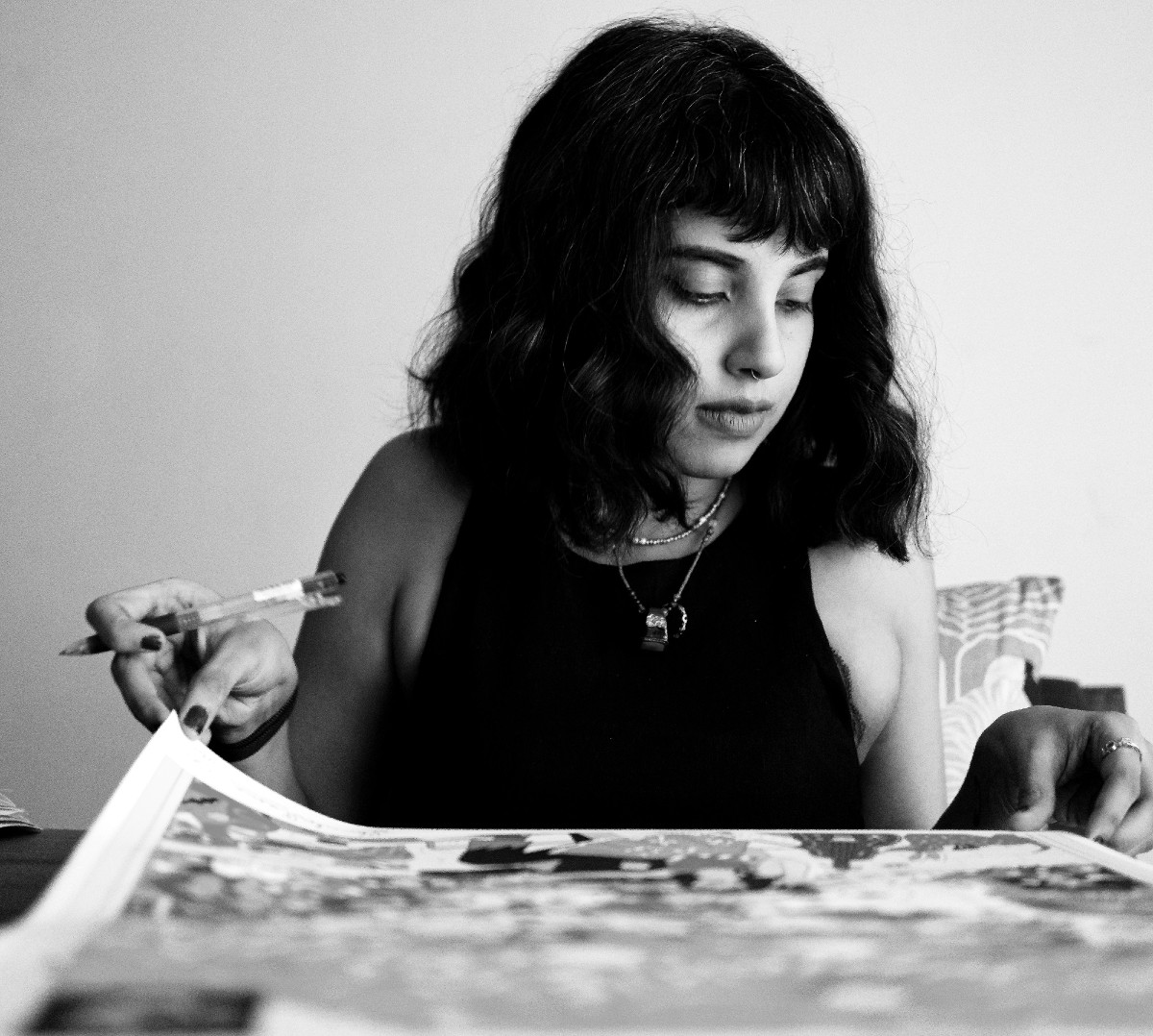
.jpg)
Shweta Sharma (above) and her artwork, A Land Which Is Greater Than. Photos: Shrikant Arora, Greater Than Team
The Gin Served Next to the Artworks:
Triple Lime Gimlet was served next to Priya Kuriyan’s Ginolem
Death Alley was served next to Priyesh Trivedi’s The Alley
Reverse martini was served next to Jasjyot Singh Hans’ Mehfil
Cinema Gin Sour was served next to Bob & Bobby’s No Street For Hate
Sour Punk Fizz was served next to Shweta Sharma’s A Land Which Is Greater Than.
More from Arts
Comments
*Comments will be moderated




.png)
